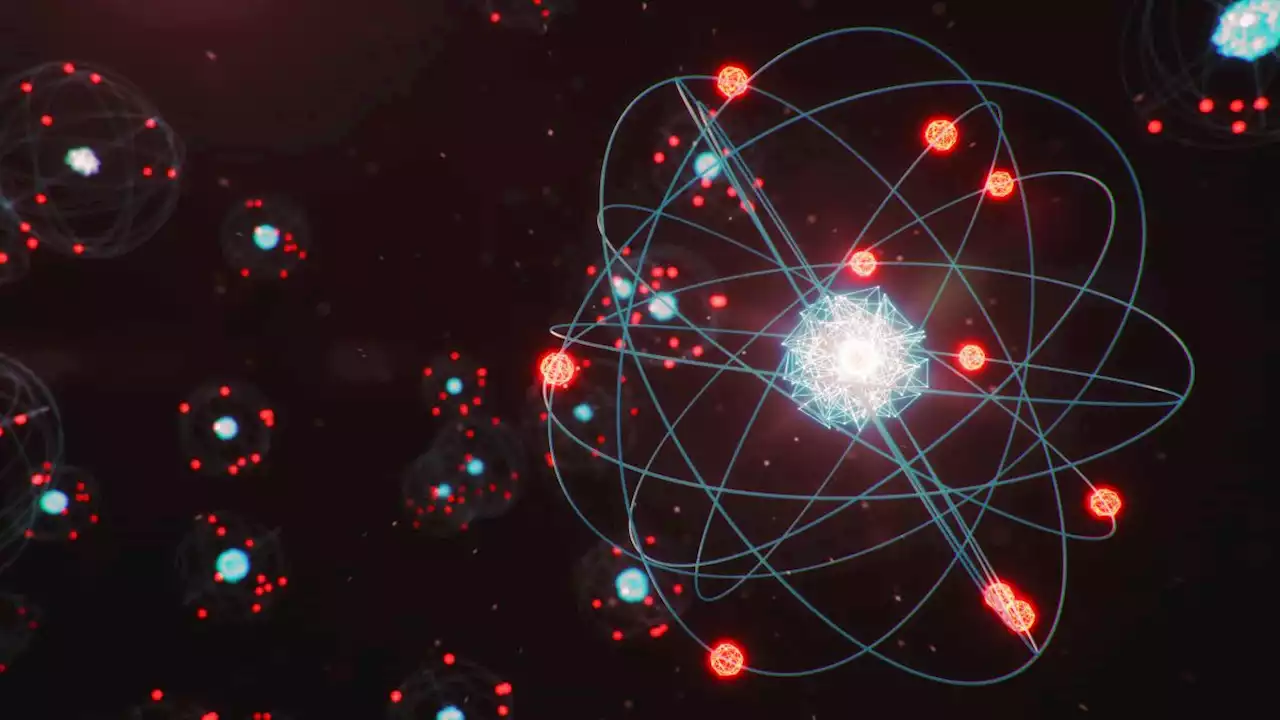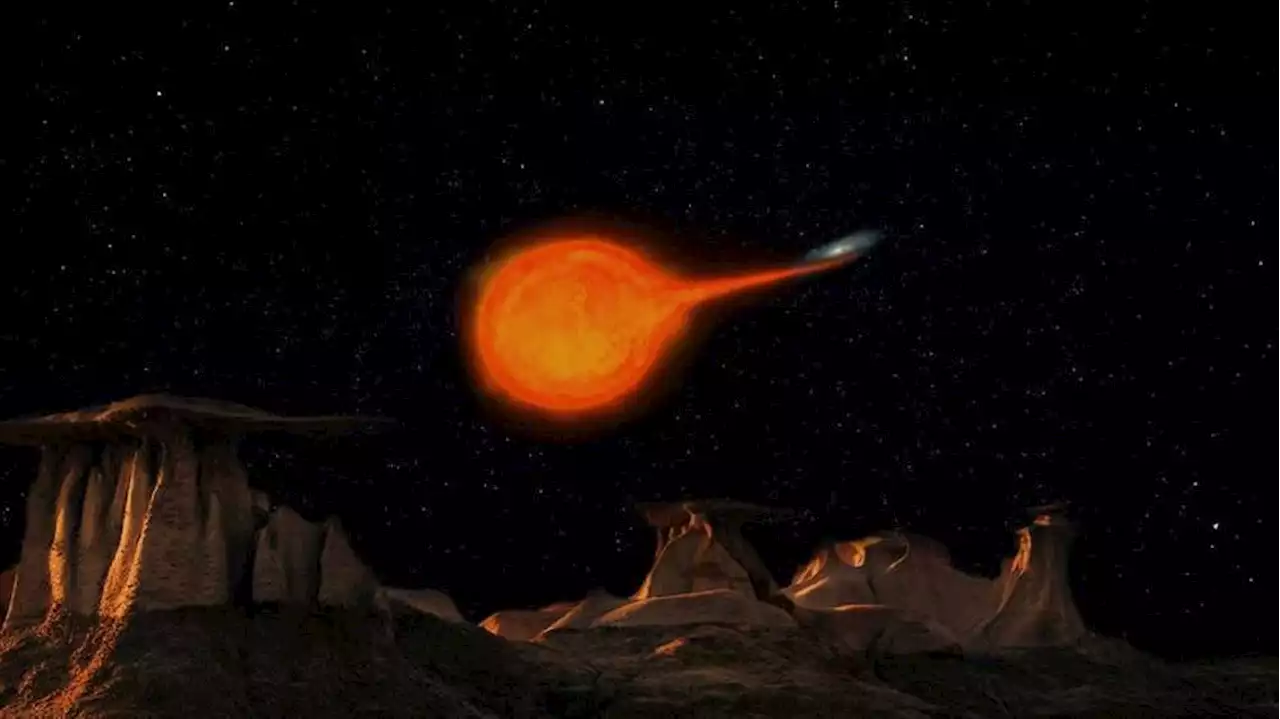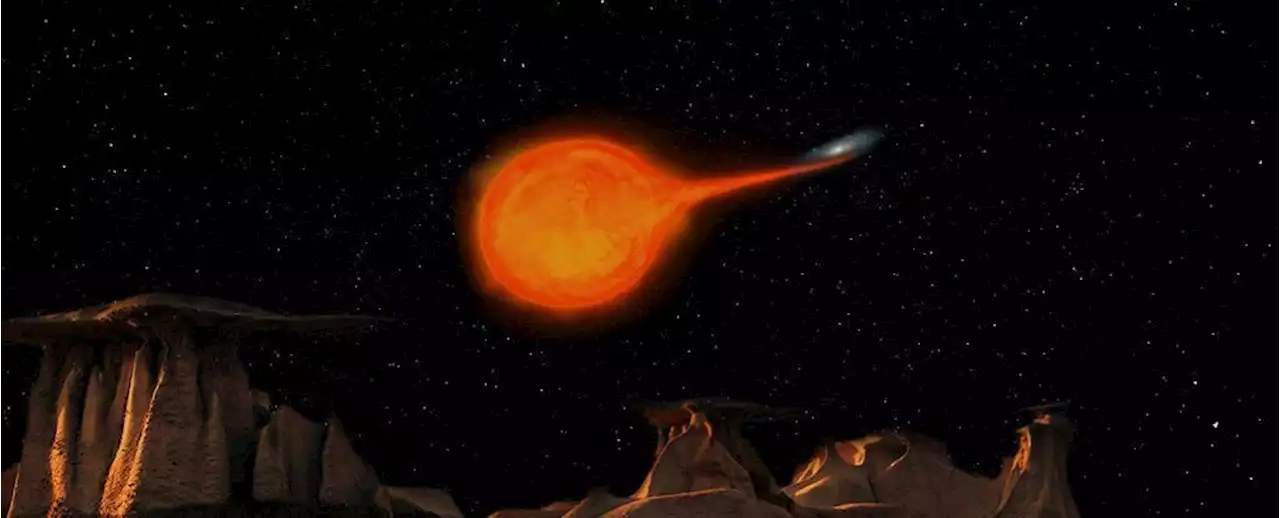Have you heard of LU Camelopardalis, QZ Serpentis, V1007 Herculis, and BK Lyncis? No, they're not members of a boy band in ancient Rome. They're Cataclysmic Variables, binary stars that are so close together one star draws material from its sibling.
Can planets exist in this chaotic environment? Can we spot them? A new study answers yes to both. undergo large increases in brightness. All stars vary in brightness to some degree, even our own sun. But CVs increased brightness is much more pronounced than stars like our Sun, and they happen irregularly
There are different types of cataclysmic variables: classical novae, dwarf novae, some supernovae, and others. All types share the same basic mechanic. A pair of stars orbit each other closely, and one of the stars is more massive than the other. The more massive one is called the primary star, and it draws gas from the lower mass star, which astronomers call the donor star.
The primary star in a CV is a white dwarf, and the donor star is usually a red dwarf. The red dwarf stars are cooler and less massive than the white dwarfs. They have masses between 0.07 and 0.30 solar masses and a radius of about 20 percent of the Sun's. White dwarf primary stars have a typical mass of around 0.75 solar masses but much smaller radii, about the same as Earth's.
If there's a dim third body – a planet – in the system, then its gravity can affect the transfer of material from the donor to the primary star. These perturbations affect the system's brightness, and that's at the heart of the new study. The authors of the study show how the chaotic environments around CVs can host planets and explains how astronomers can spot them. The study is"
United States Latest News, United States Headlines
Similar News:You can also read news stories similar to this one that we have collected from other news sources.
 Where do electrons get energy to spin around an atom's nucleus?Electrons were once thought to orbit a nucleus much as planets orbit the sun. That picture has since been obliterated by modern quantum mechanics.
Where do electrons get energy to spin around an atom's nucleus?Electrons were once thought to orbit a nucleus much as planets orbit the sun. That picture has since been obliterated by modern quantum mechanics.
Read more »
 Jack Wagner Breaks Silence After Son Harrison's Death: Read Emotional NoteWhenCallsTheHeart star Jack Wagner has broken his silence after his youngest son, Harrison, tragically died at 27. 🕊
Jack Wagner Breaks Silence After Son Harrison's Death: Read Emotional NoteWhenCallsTheHeart star Jack Wagner has broken his silence after his youngest son, Harrison, tragically died at 27. 🕊
Read more »
 One dead after fire destroys home in Glassell ParkA person was found dead after a fire sparked inside a home in Glassell Park.
One dead after fire destroys home in Glassell ParkA person was found dead after a fire sparked inside a home in Glassell Park.
Read more »
 Starving turtles are washing ashore on Port Aransas beaches, Texas State Aquarium saysThe Texas State Aquarium is caring for eight sick loggerhead sea turtles that were found stranded on Port Aransas beaches, and they’re among several others that were recently found dead or sick.
Starving turtles are washing ashore on Port Aransas beaches, Texas State Aquarium saysThe Texas State Aquarium is caring for eight sick loggerhead sea turtles that were found stranded on Port Aransas beaches, and they’re among several others that were recently found dead or sick.
Read more »
 Astronomers Have a New Way to Find Exoplanets in Cataclysmic Binary SystemsCataclysmic variables can host planets and a team of astronomers found some. It's a whole new method of detecting exoplanets.
Astronomers Have a New Way to Find Exoplanets in Cataclysmic Binary SystemsCataclysmic variables can host planets and a team of astronomers found some. It's a whole new method of detecting exoplanets.
Read more »
 How James Webb Space Telescope data have already revealed surprisesA distant galaxy cluster’s violent past and the onset of star formation in the more remote universe lie buried in the observatory’s first image.
How James Webb Space Telescope data have already revealed surprisesA distant galaxy cluster’s violent past and the onset of star formation in the more remote universe lie buried in the observatory’s first image.
Read more »
